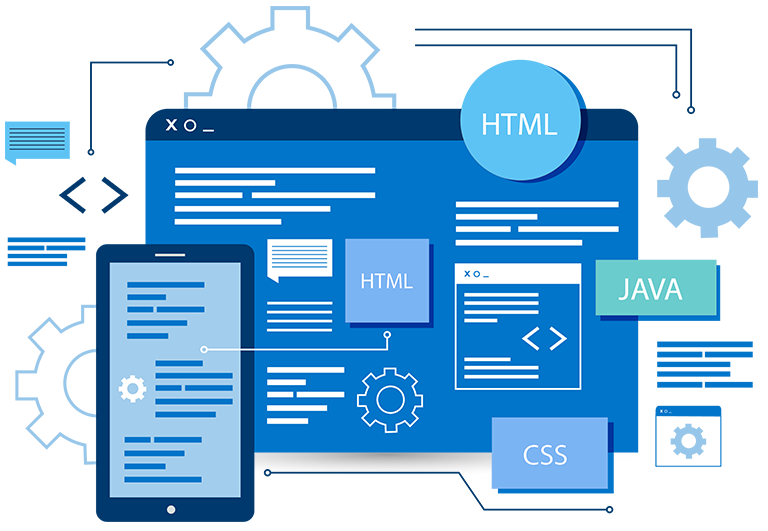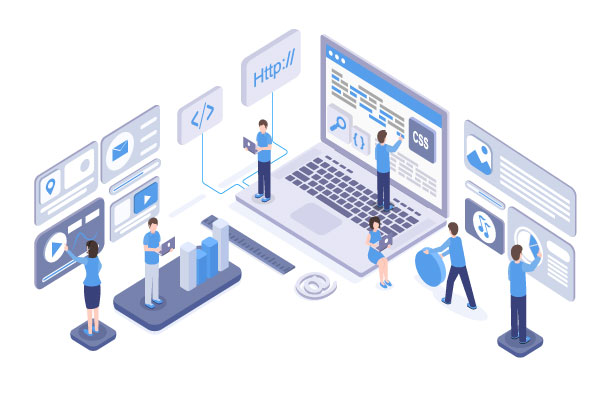If you are looking for custom web application development services, you might have come across the terms IaaS, PaaS, and SaaS.
These are the three main categories of cloud computing service models that provide different levels of abstraction, control, and flexibility for businesses and developers.
But what do these acronyms stand for? And how do they differ from each other?
More importantly, how do you choose the right one for your custom web application development project?
In this article, we will answer these questions and more.
We will explain the key characteristics, pros and cons, and more of each service model.
We will also help you decide which one is best suited for your specific needs and goals.
What are IaaS, PaaS, and SaaS?
Before we dive into the details, let’s understand the basics of each service model.
IaaS (Infrastructure as a Service)
IaaS (Infrastructure as a Service) is a cloud computing service model that provides virtualized computing resources over the internet.
In this model, a third-party provider hosts hardware, software, servers, storage, and other infrastructure components on behalf of its users.
IaaS is highly scalable and allows businesses to purchase resources on-demand, making it an ideal solution for temporary, experimental, or changing workloads.
Some examples of IaaS providers are
- Amazon Web Services (AWS),
- Microsoft Azure,
- Google Cloud Platform (GCP),
- IBM Cloud, etc.
PaaS (Platform as a Service)
PaaS (Platform as a Service) is a cloud computing service model that provides a platform for developers to build, test, and deploy applications without worrying about the underlying infrastructure.
PaaS includes tools, libraries, and services that enable developers to create and manage applications more efficiently.
This model allows businesses to focus on developing their applications while the PaaS provider takes care of infrastructure management.
Some examples of PaaS providers are
- Heroku,
- Google App Engine,
- AWS Elastic Beanstalk,
- Microsoft Azure App Service, etc.
SaaS (Software as a Service)
SaaS (Software as a Service) is a cloud computing service model that delivers software applications over the internet.
With SaaS, users can access software applications through a web browser or an app on their device without installing or maintaining them locally.
SaaS providers manage the underlying infrastructure and ensure that the applications are always up-to-date and available.
Some examples of SaaS providers are
- Google Workspace (formerly G Suite),
- Microsoft Office 365,
- Salesforce CRM,
- Slack,
- Zoom, etc.
IaaS vs. PaaS vs. SaaS: Characteristics
Now that we’ve covered the basics of each service model let’s understand their key characteristics.
| Service Model | Characteristics |
| IaaS | Scalability: IaaS offers on-demand resources allowing businesses to scale up or down as needed.Cost-effective: Users only pay for the resources they consume reducing upfront costs.Customization: IaaS provides a high level of control over the infrastructure enabling businesses to tailor their environment to their specific needs.Security: Users are responsible for securing their data and applications while the provider handles physical security.Maintenance: Users are responsible for managing their servers operating systems patches updates backups etc. while the provider handles hardware maintenance. |
| PaaS | Productivity: PaaS enables developers to focus on coding testing and deploying applications without worrying about infrastructure management. Innovation: PaaS provides access to various tools libraries frameworks APIs etc. that allow developers to create innovative applications faster.Compatibility: PaaS ensures that applications run consistently across different devices browsers operating systems etc.Security: The provider is responsible for securing the platform while the users are responsible for securing their data and applications.Maintenance: The provider is responsible for managing updating and maintaining the platform while the users are responsible for managing their applications. |
| SaaS | –Accessibility: SaaS allows users to access software applications from anywhere anytime using any device with an internet connection.Convenience: SaaS eliminates the need for installing updating or maintaining software on individual devices.Flexibility: SaaS offers various subscription plans features options etc. that users can choose from according to their needs.Security: The provider is responsible for securing the software and the data while the users are responsible for following best practices such as using strong passwords.Maintenance: The provider is responsible for managing updating and maintaining the software while the users are responsible for using it. |
IaaS vs. PaaS vs. SaaS: Pros and Cons
Each service model has its own advantages and disadvantages depending on the use case and the requirements. Here are some of the pros and cons of each service model.
| Service Model | Pros | Cons |
| IaaS | -Provides maximum control and customization over the infrastructure. -Reduces capital expenditure and operational costs.- Enables rapid scalability and flexibility. | – Requires technical expertise and resources to manage the infrastructure.- Involves security risks and compliance issues.- May result in vendor lock-in or compatibility issues. |
| PaaS | – Increases productivity and innovation of developers.- Simplifies application development and deployment.- Ensures compatibility and reliability of applications. | – Limits control and customization over the infrastructure.- Depends on the availability and performance of the provider.- May result in vendor lock-in or compatibility issues. |
| SaaS | – Improves accessibility and convenience of users.- Reduces software installation and maintenance costs.- Offers flexibility and variety of software options. | – Limits control and customization over the software.- Depends on the availability and performance of the provider.- Involves security risks and privacy issues. |


